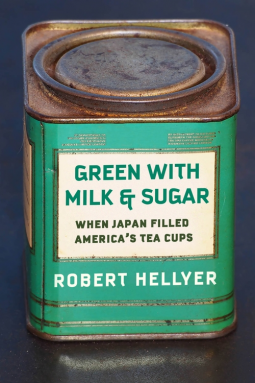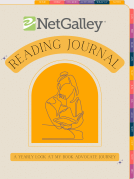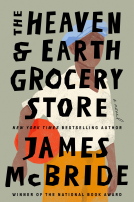
Green with Milk and Sugar
When Japan Filled America’s Tea Cups
by Robert Hellyer
This title was previously available on NetGalley and is now archived.
Send NetGalley books directly to your Kindle or Kindle app
1
To read on a Kindle or Kindle app, please add kindle@netgalley.com as an approved email address to receive files in your Amazon account. Click here for step-by-step instructions.
2
Also find your Kindle email address within your Amazon account, and enter it here.
Pub Date Oct 12 2021 | Archive Date Jan 19 2022
Talking about this book? Use #GreenwithMilkandSugar #NetGalley. More hashtag tips!
Description
Today, Americans are some of the world’s biggest consumers of black teas. In Japan, green tea, especially sencha, is preferred. These national partialities, Robert Hellyer reveals, are deeply entwined. Tracing the trans-Pacific tea trade from the eighteenth century onward, Green with Milk and Sugar shows how the interconnections between Japan and the United States have influenced the daily habits of people in both countries.
Hellyer explores the forgotten American penchant for Japanese green tea and how it shaped Japanese tastes. In the nineteenth century, Americans favored green teas, which were imported from China until Japan developed an export industry centered on the United States. The influx of Japanese imports democratized green tea: Americans of all classes, particularly Midwesterners, made it their daily beverage—which they drank hot, often with milk and sugar. In the 1920s, socioeconomic trends and racial prejudices pushed Americans toward black teas from Ceylon and India. Facing a glut, Japanese merchants aggressively marketed sencha on the home and imperial markets, transforming it into an icon of Japanese culture.
Featuring lively stories of the people involved in the tea trade—including samurai turned tea farmers and Hellyer’s own ancestors—Green with Milk and Sugar offers not only a social and commodity history of tea in the United States and Japan but also new insight into how national customs have profound if often hidden international dimensions.
About the author: Robert Hellyer is associate professor of history at Wake Forest University. He is the author of Defining Engagement: Japan and Global Contexts, 1640–1868 (2009) and coeditor of The Meiji Restoration: Japan as a Global Nation (2020).
Advance Praise
"Beautifully researched and written, Green with Milk and Sugar demonstrates how important Japan has been to developing U.S. tastes and trade and global capitalism. Hellyer reveals a tremendous amount about consumption and trade in Japan and how Pacific influences can be found throughout the American continent. Green with Milk and Sugar will appeal to tea lovers, historians, food scholars and members of the tea trade."
—Erika Rappaport, author of A Thirst for Empire: How Tea Shaped the Modern World
Available Editions
| EDITION | Other Format |
| ISBN | 9780231199100 |
| PRICE | $32.00 (USD) |
Featured Reviews
 Geoffrey S, Librarian
Geoffrey S, Librarian
I will confess that as someone who sees at least several Dunkins on my way to work and back, I don’t usually think of the USA as a major tea-drinking country (excluding sweet tea’s ubiquity in the south, apparently), much less a land where green tea in particular reigns supreme. However, apparently that was indeed the case, according to Robert Hellyer’s “Green with Milk and Sugar.” In this history, Hellyer covers how Japanese green teas used to be a preferred beverage all across the United States, particularly in its midwestern heartland, before a combination of market forces, ad campaigns that played upon white Americans’ racism, and eventually WWII upended this position.
Hellyer’s style of writing is very much academic, which admittedly makes for a bit of a dry narrative at times. However, the excellently thorough detailing on the evolution of Japan and America’s intertwined tea-consumption habit still made for an interesting read overall, and the author;s passion for the subject is clear. Lovers of food histories in particular will find much to enjoy here.
Written in a decidedly academic style, this book may not appeal to the masses. However, if you have a thirst for both tea and knowledge, this book is a treasure trove. Those interested in American history and Japanese culture will gain a lot as well.
My thanks to author Robert Hellyer, NetGalley, and Columbia University Press for allowing me to read a digital advance review copy of this book. This review is my honest and unbiased opinion.
 Bookseller 689249
Bookseller 689249
What an interesting book! There is so much more to the history of tea than I had ever realised. This book does such a great job at bringing to light details and stories all along the common theme of tea and it's historical and cultural significance.
My favourite part is all of the photographs and illustrations that are a part of this book. It's like walking through a museum and really helped bring the history to life.
 Reviewer 762493
Reviewer 762493
A lovely academic book containing exactly what the tin suggests: a history of Japanese tea, in relation to America. As a bonus point, the author is a historian of early and modern Japan whose family used to be involved in the Japanese-US tea trade - I assume that's where his interest spawned from, and it's pretty neat for the rest of us that it did.
While mostly concerned with Japan, "Green with Milk and Sugar" starts long before that, during a time when tea came from China, Japanese borders were closed to the British, and the US threw tea into the sea.
Hellyer shows that tea used to be a staple of American culture, and follows the ups and downs in the popularity of various types of tea (greens, blacks, Oolongs, Chinese, Japanese, Indian, Ceylonese), the value of imports, the routes, the ways in which it was drunk and where, the advertising and the mentality related to it.
It's quite a ride. Chinese tea used to be artificially colored with Prussian Blue, for example. When Japan opened its borders, Chinese tea experts were hired in Japan to ensure that the tea made for export would be suitable for American tastes. At one point, there was a lot of anti-Chinese sentiment, while the Japanese were viewed neutrally; but eventually, feelings turned against the Japanese, too. When Southern Asia started exporting its black tea to the US, it would make claims about Chinese/Japanese teas being impure and tainted by the sweat of Asian workers, unlike Indian/Ceylon tea, which was made by machines. And so on.
The book contains a lot of hard data: how many millions of pounds of tea were imported to the US during some years; what types they were; where they were popular. It also contains anecdotes about some of the people involved, photos and reproductions of ads and labels, stories about the promotion of teas at World Fairs.
The only thing I really felt was missing was a larger context for the tea trade. The book is great as it is, but it's so tea-centered that it's hard at times to figure out what role that tea had in the wider world. What does it mean that Japan exported so many millions of pounds of tea? Was it exporting other things? If yes, how much did it care about its tea exports in comparison with other exports?
Overall, a great read, and one I'd be happy to throw at friends. Many thanks to NetGalley and Columbia University Press for this ARC.
Green with Mill and Sugar is a fascinating academically minded look at Japanese tea, the United States, and how they are intertwined. Hellyer discusses the popularity of tea in the US and the ways it has changed over time. For instance, green tea, often with milk and sugar, used to be the favored tea. Due to a variety of reasons discussed therein, black tea became more popular in the US and green tea more popular in Japan. I found it very interesting and filled with not only a great about of information but statistics and images as well. While it is a little dry, I highly recommend for anyone interested in the history of tea and/or wondered why we drink what we do.
This is a fascinating look at the history and consumption of green tea. I have not seen many other books that focus on green tea specifically, usually, you read about black tea or just "tea" in general. I feel like I learned a lot from this book and it really opened my eyes to the effects of imported goods and food and how change and trade are so important. Fascinating read!!
 Angela H, Librarian
Angela H, Librarian
Thanks for the opportunity to review this book. I originally chose this book thinking I could possibly have students use sections or chapters for analysis. I think this is too technical for my age group.
Overall, I enjoyed this book. It was a little more scholarly than I expected. What kept me going were the examples of how racism can change seemingly small parts of our day and how those changes radiate out to the rest of the world.
As an American who loves tea, I found this book to be full of new information regarding the fascinating history of the green tea market in the United States. I loved seeing the various photos showing tea labels and advertisements, as well as the anecdotes and stories of promoting teas at different World Fairs. There's lots of data thrown at readers, which I enjoyed seeing but felt a bit overwhelmed toward the end of the book. I would've liked learning more about how the tea trade impacted the world in a broader context.
Not everyone is obsessed with tea and how it got to the US, but I am. This was a fun read for me. It is decidedly academic(meaning well researched) but is still accessible to the everyday reader. It is more fact based than story. I love tea and so this was incredibly interesting to me. If you are interested in green tea and it's history, pick up this book.
Readers who liked this book also liked:
Tahir Hamut Izgil
Biographies & Memoirs, History, Nonfiction (Adult)


















